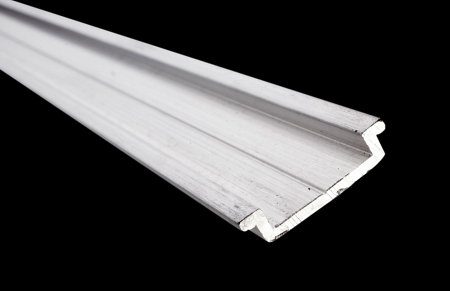When installing LED strip lights, the choice of LED profile diffuser is as crucial as the lights themselves. A well-chosen diffuser not only enhances the aesthetic appeal of the lighting but also optimizes its functionality and durability. This guide will explore the essential factors to consider when selecting an LED profile diffuser, ensuring that your lighting installation achieves both beautiful and efficient results. Whether you are a professional designer or a DIY enthusiast, understanding these elements will help you make the best choice for your lighting project.

Understanding LED profile diffusers
An LED profile diffuser is a crucial component in the setup of LED strip lighting systems. Essentially, it is a cover that fits over the LED lights, serving multiple vital functions. First, it protects the LED strip from dust, physical damage, and exposure to moisture, which can significantly extend the lifespan of the lights. Secondly, it diffuses the light emitted from the LEDs, which helps eliminate harsh glares and distribute light evenly, enhancing the overall aesthetic appeal.
These diffusers are typically made from materials like polycarbonate or acrylic and come in various levels of transparency and finishes, with frosted diffusers being particularly popular for their ability to soften light effectively. The choice of material can affect not only the durability and look of LED installations, but also how the light is filtered and displayed.
Alongside the diffuser itself, other components such as aluminium channels, end caps, and mounting clips play a role in the installation and overall performance of the lighting system. Aluminium channels serve as the housing for both the LED strip and the diffuser, providing a sturdy base that can be mounted to any surface. End caps seal this setup, helping to prevent moisture and dust ingress, while mounting clips facilitate the actual installation on surfaces.
Understanding these components and their functions is the first step towards making an informed choice about which LED profile diffuser to use in your lighting project. As we delve deeper into the factors to consider, such as material, size, and installation specifics, you’ll gain a clearer picture of what will work best for your specific needs. If you are looking for quality aluminium profile, check the offer at https://lucasled.ie/aluminium-led-profiles.
Factors to consider when choosing LED diffusers
Selecting the right LED profile diffuser involves considering various factors that can significantly impact both the installation process and the outcome of your lighting project. Here’s a detailed look at some key aspects to keep in mind:
1. Material and durability
The choice of material is paramount when choosing your LED diffuser strip. Diffusers typically come in materials like acrylic or polycarbonate, each offering different levels of durability and light diffusion. Acrylic diffusers, for example, are known for their clarity and resistance to UV light, making them suitable for areas that receive a lot of sunlight. Polycarbonate, on the other hand, is renowned for its impact resistance and is better suited for high-traffic areas or outdoor environments where physical damage is a concern.
Moreover, the channel material, often aluminium, is crucial for the overall durability and heat dissipation of the lighting setup. Aluminium channels help manage the heat produced by LED strip lights, thereby extending their lifespan and maintaining light efficiency.
2. Size and compatibility
The size of the strip diffuser must perfectly match the size of the LED strip lights to ensure effective coverage and optimal light diffusion. It is essential to measure the width and thickness of your LED strips and ensure that the chosen diffuser profile can accommodate them without squeezing or leaving too much space.
Compatibility extends beyond size. Certain profiles are designed to snap fit, while others might require adhesives or screws for installation. Ensuring that the diffuser and the channel are compatible in terms of installation methods can save significant time and effort during the setup process.
3. Installation ease and accessories
The ease of installation is a critical factor, particularly for DIY installations. Some diffusers are designed to be user-friendly, offering features like snap-on covers which make it easy to install or replace without needing tools. Others might require a more hands-on approach, involving screws and mounting clips.
Accessories such as mounting clips, end caps, and adhesive tapes play a pivotal role in the installation process. Mounting clips help secure the LED strip and diffuser to the surface, ensuring they remain stable and aligned. End caps not only enhance the finished look of the installation but also protect the LED strip and connections from dust and moisture.
By considering these factors — material and durability, size and compatibility, as well as ease of installation and available accessories — you can choose a diffuser that meets your aesthetic needs and stands up to the environmental demands of its installation location. These considerations will guide you in selecting a diffuser that complements your LED strip lights, ensuring a beautiful, functional, and long-lasting lighting solution.

Choosing the right LED diffuser for aesthetic and function
When it comes to enhancing the beauty and functionality of LED strip lights, the profile of the diffuser plays a significant role. The profile refers to the shape and the overall design of the diffuser, which can range from shallow, barely noticeable forms to more pronounced, decorative profiles. Each type comes with different aesthetic and functional uses.
For example, a shallow diffuser profile is often used in minimalist or modern designs where the lighting should not be the focal point but rather blend seamlessly with the environment — this effect can be complemented with a frosted diffuser cover. These are ideal for under-cabinet lighting in kitchens or backlighting in living areas. On the other hand, deeper or more prominently shaped profiles can create a statement piece, suitable for commercial settings or feature lighting in home interiors.
Moreover, the profile can influence the light dispersion. A deeper channel might provide a more diffused, softer light, which reduces glare and creates a more uniform light spread, ideal for ambient lighting. In contrast, a shallow diffuser might focus and direct the light more precisely, which could be preferable for task lighting where clarity and brightness are needed.
By understanding the interplay between the profile design and the intended use of the lighting, you can make a more informed decision that balances both aesthetic appeal and practical utility.
LED profiles — conclusion
Choosing the right LED profile diffuser is crucial for achieving both the desired look and functionality of your LED strip lighting installation. By considering the material and durability, ensuring proper size and compatibility, and evaluating the ease of installation and required accessories, you can significantly enhance the outcome of your project. Remember, the right diffuser not only protects and extends the lifespan of your LED light strips but also plays a pivotal role in how the light interacts with your space, affecting everything from mood to usability.
As you proceed with your selection, take these factors into account and opt for a profile diffuser that best meets the specific needs of your installation environment. With the right choices, your lighting project can achieve a perfect blend of style, functionality, and longevity, making every space not just well-lit but beautifully illuminated.


